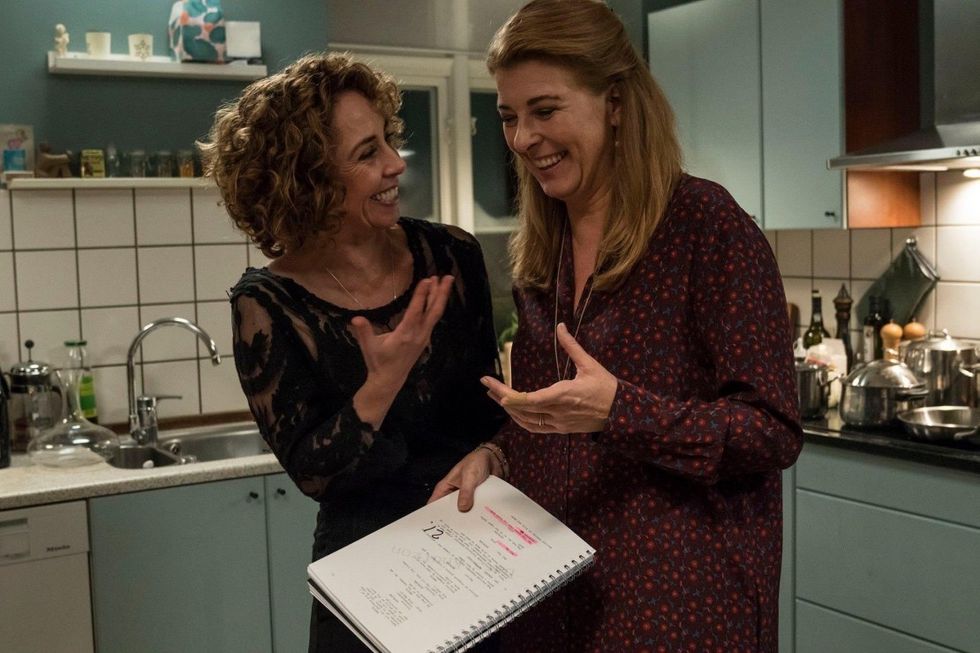'Never Direct the Actor with More Words than You Can Put On a Stamp': Paprika Steen on Directing for Performance
Acting in a film is difficult. Directing it simultaneously is even harder.
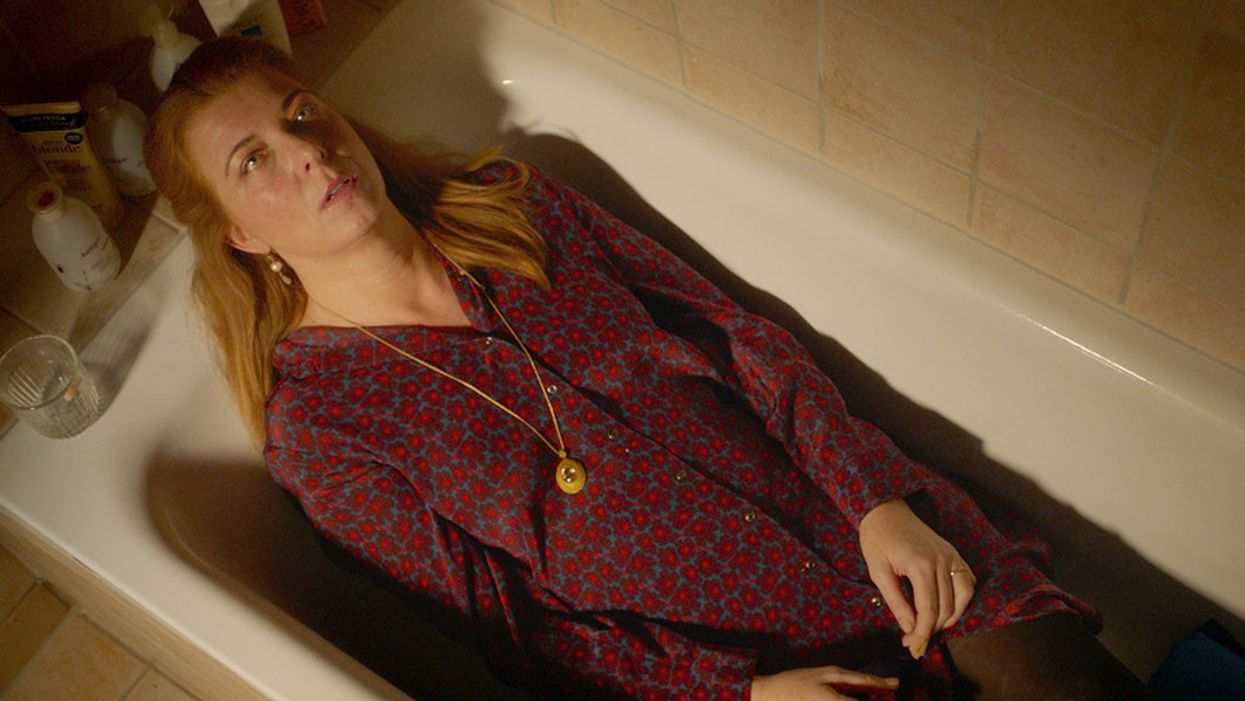
The highly-celebrated Paprika Steen just premiered her latest film at the Toronto International Film Festival as both director and star. TitledThat Time of Year, this is Steen’s third feature as a director, but she’s even better known as an actress. Back in 2003, she famously won both Best Supporting Actress (for Open Hearts) and Best Actress (for Okay) at the Robert Festival (the Danish equivalent of the Oscars).
Numerous awards later, the authenticity of her filmmaking reflects her years of experience. No Film School sat down with Steen to learn the takeaways from her impressive career, including what it takes to direct herself.
1. Love Your Characters
A mordant comedy about the unwinnable war otherwise known as ‘Christmas with the family,’ That Time of Year explores cringe-worthy drama with ludicrous cheer. Echoing Buñuel’s The Exterminating Angel, the film revolves around a group of relatives stuck in a never-ending holiday dinner party. Starting off as a low-key kickback between relatives, it quickly escalates into an uproarious, bacchanalian disaster; everyone’s worst tendencies are revealed. Even the audience is captive: disarmed by laughter, we are thrust into uncomfortably intimate quarters. We're part voyeur, part judge, part complicit participant.
The film’s subject matter appealed to Steen because of its universality. “You can’t choose family; it’s this tribe you’re stuck with,” she shook her head, clearly considering her own. “You could be the first, or second, or eighth in a family, and you have this number on your back for the rest of your life. No matter how smart you get, no matter how much you work on or repair yourself, you’re still going to fall into the same role in your family.”
Steen’s roles are well-inhabited. That Time of Year is a film of performances of likable and captivating characters, even at their worst. “Nobody’s perfect, but nobody’s only horrible either,” she smiled. “I really visualize my characters, and I really love them, even the most obnoxious ones. I like to torment them: I have my arm around their necks, almost strangling them, but I never pull them underwater.”
It’s a perfect mix of pain and pleasure. The cast embodies onscreen comfort—child actors included—even while channeling their deepest vulnerabilities and insecurities. According to Steen, they achieve this mix of believability and empathy, in large part, by becoming a family.
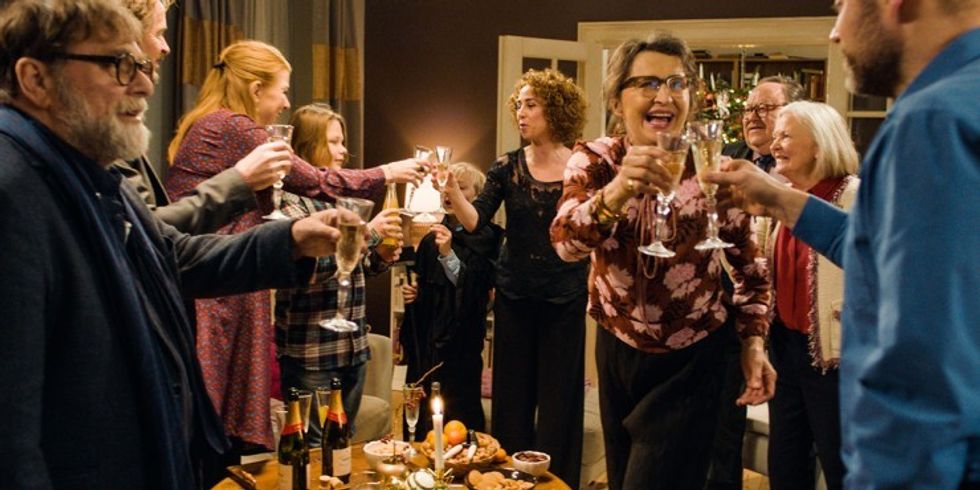
2. Create Your On-Set Family
Luckily, you do get to choose your on-set family. Steen revealed that she knew most of the people she was going to work with from the get-go; the rest quickly fit in. That was key, especially on such an intimate set. “We don’t have separate trailers in Denmark, we’re just together, the whole crew in the same room,” she recalled. “We lived in a little house right next to the one we were shooting in for five weeks, and after a very short time, we became family.”
Like most families, Steen’s clan had plenty of foibles and she took care to let them shine. As their director, she paid careful attention to each relative’s idiosyncrasies, including disputes over recipes, unexpectedly morbid gifts, and countless thinly-veiled potshots. Some of the most palpable tension comes when family members strain to make a nice comment, however insincere. It’s a realistic balance of humor and drama: when Grandma shares some sobering news, Grandpa sympathetically holds his granddaughter’s hand. However, once it’s clear that the news was a ploy for attention, he drops her hand abruptly. This is clearly a family with history. The backstory feels real and complete; the baggage is all there.
Steen believes that this level of detail was possible because she was in the film herself. As she explains it: “The film has this meta element, where I play the hostess directing this Christmas party, but I’m also directing everybody in the scene.” Normally, acting AND directing is ill-advised: trying to perform a scene while studying other performances can be tricky.
Steen found a loophole. “Of course, I had a technical director watching the monitor. But I was just listening, and I could sense when a scene was working because I was in it, because I was directing the characters while I was in character.”
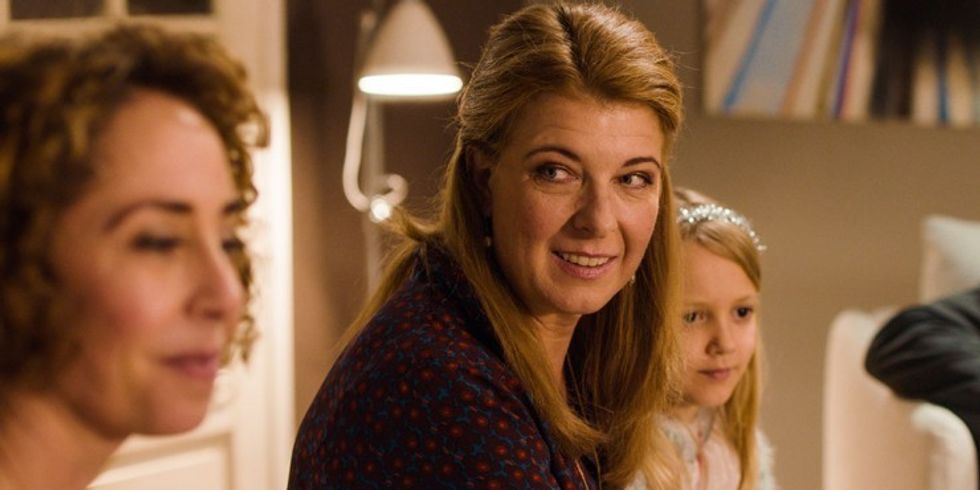
3. As a Director, Be Direct
A control-freak director might take a different approach, but Steen enjoyed directing her “relatives” as a group rather than individually. Syncing up her cast as an ensemble (rather than taking them aside for one-on-one discussions) was a deliberate creative choice. “It was fun to direct the whole group with one emotion, because then each individual would take that feeling in their own personal direction. Especially as opposing family members, I wanted to give the actors room to develop their individual characters.”
"Actors are very manipulative. If they don’t want to do something, they’ll talk to your ear off and procrastinate."
The trust was mutual. As a fellow actor, Steen knew how to gain her collaborator’s confidence. “I’m very raw and direct with my fellow actors. I can say to them, ‘Nah, I don’t like that.’ Or, ‘Don’t be so theatrical, don’t think so much about it, live through your lines.’ I get away with directness because I don’t have an ego. It’s not like I can’t let myself fail in front of my actors. It’s important to be able to admit when you’re wrong.”
She laughed, thinking back, “Actors are very manipulative. If they don’t want to do something, they’ll talk to your ear off and procrastinate. Sidney Lumet said: ‘If an actor tries to make too many changes in the script, don’t change the script, change the actor. Once the right actor finally comes in the door, you will know it.’”
For Steen, acting is like parenting. She nodded, narrowed her gaze and then tapped on my leg—a lot like Yoda swatting Luke. “Never direct the actor with more words than you can put on a stamp. Don’t over-direct. Figure it out before you go on set. If you start to overanalyze your own directing, your actor’s going to die inside. Teach yourself to say what you want to say in very few words.” She smiled wryly, “Even if I don’t always do it, it’s advice I believe in.”
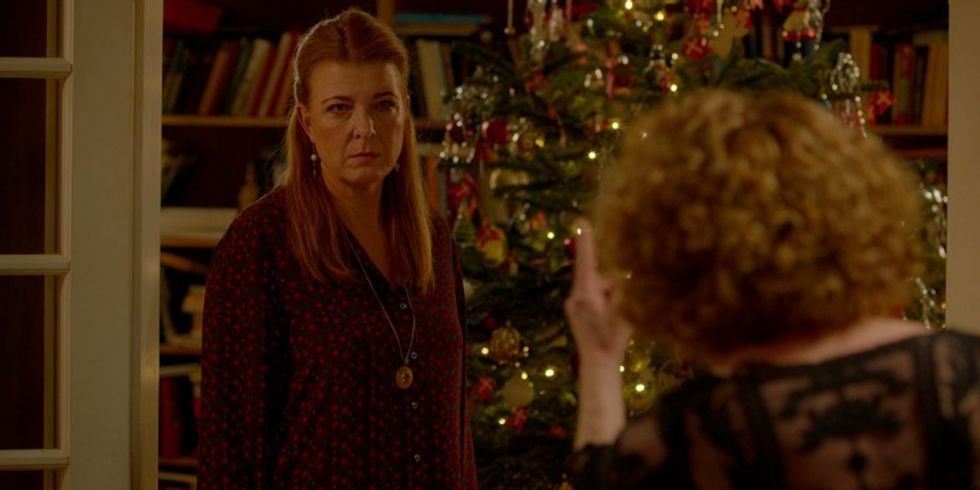
4. Improvise Dialogue—but Not the Blocking
Another trick up Steen’s sleeve was improv. While shooting That Time of Year, she built improvised, in-character conversations around each take—a technique she had picked up as an actor.
"Don’t use blocking just to cover up bad acting. Underline the acting with good blocking."
“Before every scene, I asked the actors to improvise a bit before rolling, just as a warm-up: talk about the wine, trade stories about kids,” she revealed. At first, it felt innocuous; but then, over time, these conversations evolved into the passive-aggressive verbal jousting that drives the film to its hilarious, and surprisingly tender, conclusion. “Seeing the film, you wouldn’t know it, but three or four of those improvised scenes actually made it into the final cut.”
While improvisation was welcome, blocking needed to be very specific with each of these actors in one house, Steen admitted. “Blocking is so important. I was a little stiff in my other movies; I was afraid of making people go back and forth. But then I learned: don’t use blocking just to cover up bad acting. Underline the acting with good blocking. That makes it feel organic.”
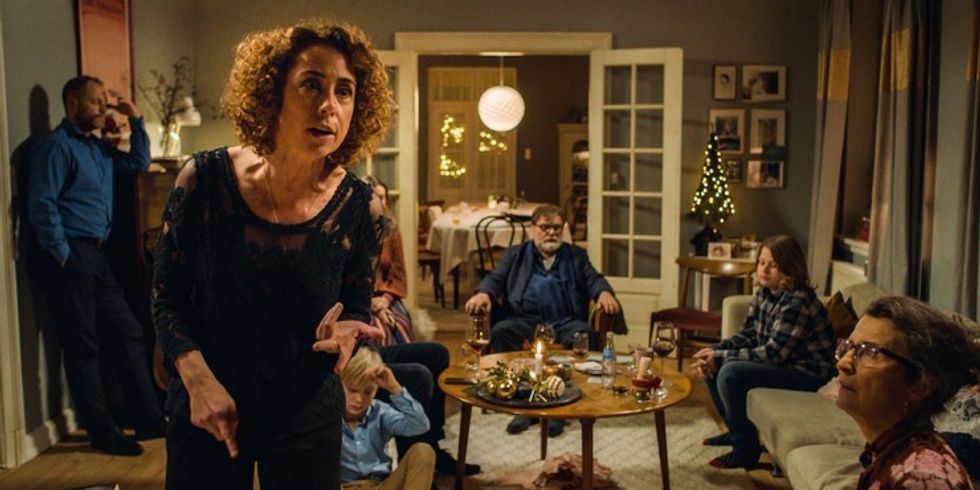
5. Trust Yourself
The biggest lessons Steen has picked up in her lengthy career have been psychological. “It’s a balance between believing in your ideas, standing up for what you want to do artistically, and not demanding too much. You have to be decisive and kill your darlings; instead of thinking that your piece of art is being ruined, you have to embrace the issues, accept the challenges. They will make the final project better.”
Steen confides that she’s still learning—and that everyone else is too. “Don’t think that everybody else has so much more experience than you, or that they are so much wiser. Don’t be apologetic. I was like that for the first movies I directed, even though I instinctively knew so much about the process from acting.”
"Don’t be afraid to be banal. Trust what YOU want to do.“
The last time Steen directed a feature was in 2007. Today, she explains that refractory period as “‘being in a really dark place for many years.’ I kind of felt like, ‘Why should I bother to direct, everything’s been done. I have nothing new to bring to the table.’” She shook her head, smiling, clearly over it. “Then the producer, also my ex-husband, kind of kicked me in the butt to get out there and do it.” She laughed, “Family.”
As Steen describes it, it has been rejuvenating to get back in the game. Besides recharging her creative juices, it led her to an important realization: “You don’t need to be original,” she insisted. “My stepfather was a painter and he had so many paintings of sunrises and sunsets that he never showed anyone. He used to tell me ‘This is the forbidden theme, paintings of weather are considered tacky. I’m just doing it for myself.’ And I loved those paintings.” Steen twinkled, remembering, “As a young director especially, don’t think you have to invent the world all over again.”
Steen is a big proponent for showing clips from other movies to her production team as references: “I want to shoot it like this, or I want this and that color.” She’s no longer shy about repetition. “When you’re young, you think you have to be political, you have to make a complicated movie, you have to put this and that in it. Sometimes you’re afraid to say ‘I want to make something just like Steve McQueen in Bullitt.’ Well, forget that. All movies have been done at least once, so if you want to remake a scene, go ahead and do it. Update it with your own eye, your own experiences. Don’t be afraid to be banal. Trust what YOU want to do.“
